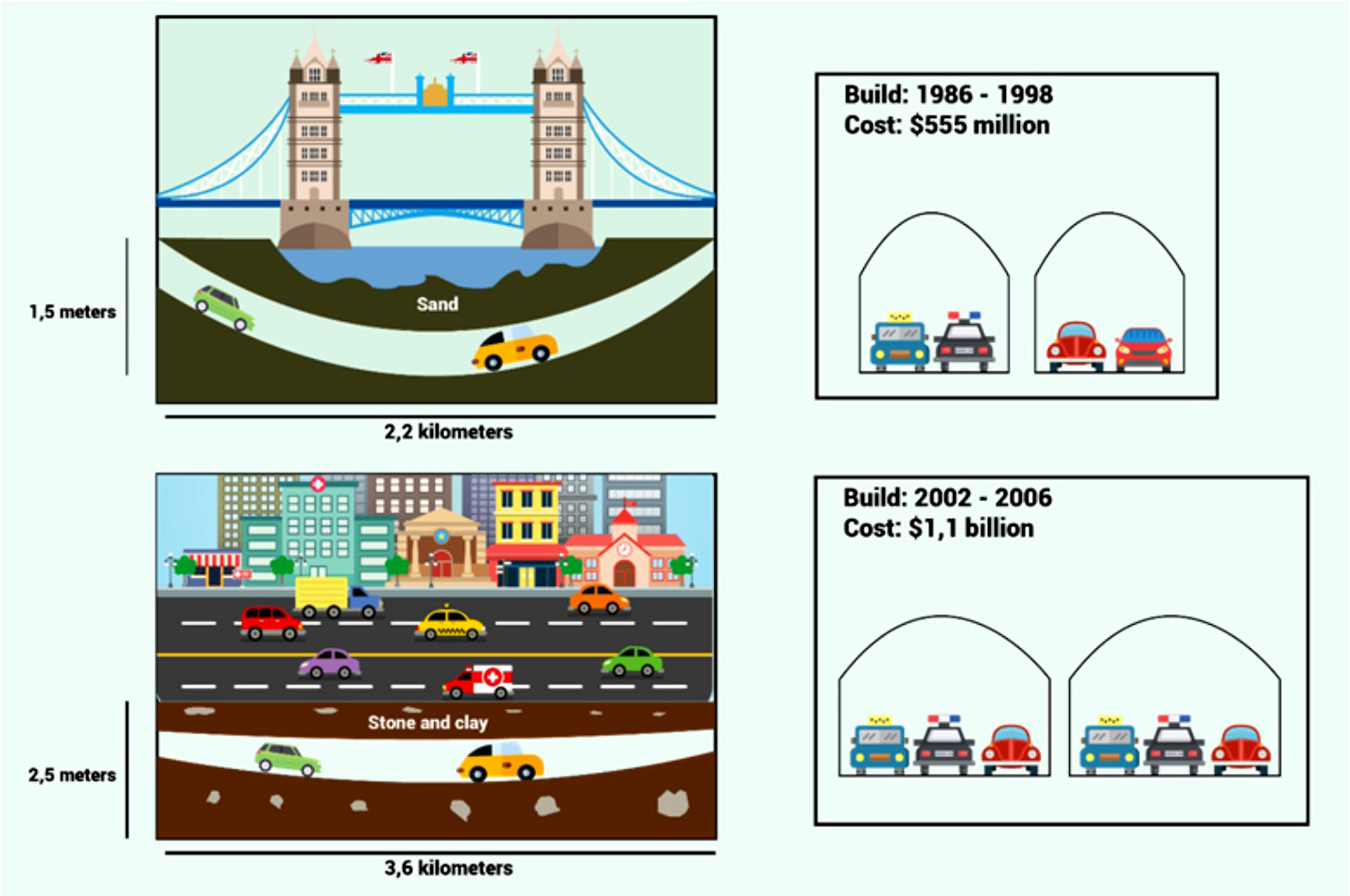IELTS Writing Recent Actual Test 33
WRITING TASK 1
You should spend about 20 minutes on this task
The maps show two different underground tunnel systems for cars in two Australian cites.
Write at least 150 words.

WRITING TASK 2
You should spend about 40 minutes on this task
Write about the following topic:
Given high unemployment rate, it is recommended that the government only provide primary education and no secondary education. What do you think?
Give reasons for your answer and include any relevant examples from your own knowledge or experience.
Write at least 250 words.
SAMPLE ANSWER IELTS WRITING TEST 33
WRITING TASK 1The given maps illustrate two different underground tunnel systems for cars in two Australian cites.
Overall, there are a number of differences between the two tunnel systems, in terms of the cost, size, length, time of construction, and the surrounding environment. The first tunnel cost approximately half as much as the second tunnel to construct, however, the first tunnel was significantly smaller in terms of length and vehicle capacity. The first tunnel also took much longer to construct.
The first tunnel, which took twelve years to construct between 1986 and 1998, cost $555 million, and was built underneath a body of water and sand. Meanwhile, the second tunnel only took four years for completion but cost twice as much, at $1.1 billion, and was constructed beneath a layer of stone and clay.
The size of the tunnels was also substantially different, with the first tunnel being 1.5 meters high and 2.2km long, and the second tunnel being 2.5m high and 3.6 km long. The first tunnel system is four lanes wide, while the second tunnel system is six lanes wide.
(180 words)
WRITING TASK 2It is believed that countries which have high unemployment rates should only offer primary education; and extending secondary education to students who are not likely to find work in the future is a hopeless attempt. I personally consider this to be a flawed argument, and I will explain my reasoning in the essay below.
Important as it is to a child’s overall development, primary education does not provide any necessary work skills. The fundamental aim of this early stage of education is simply to lay a basis for a student’s cognitive development through the learning of language, art and basic science. People who complete this level of education are not equipped with the necessary skills and knowledge to enter the workforce. While those people may find blue-collar employment, it is unlikely that they can get a decent job. Therefore, if a country with a high unemployment level only offers primary education to the majority of students, the outcome will not be worthwhile.
Furthermore, I would argue that investing in secondary schooling systems and delivering secondary education to young students are of greater importance when it comes to improving the overall employment rate of a country. In fact, nowadays, many middle and high schools hire a large number of secondary education degree holders who work better with younger age groups and are more familiar with the subjects taught at this level of education. There are also many other types of non-academic careers, such as in the beauty and entertainment industries, that only require a secondary education degree. Last but not least, I believe that we should not restrict secondary education to a certain group of students who are deemed eligible because everyone deserves an equal opportunity to access education.
In conclusion, I disagree that providing only primary education is the best course of action to be adopted in the context of a nation with a high rate of unemployment. Secondary education, on the other hand, is a major contributor to combating unemployment. I also believe that we should not dispense secondary education to only a select number of students as everyone has the right to be educated.
(356 words)
